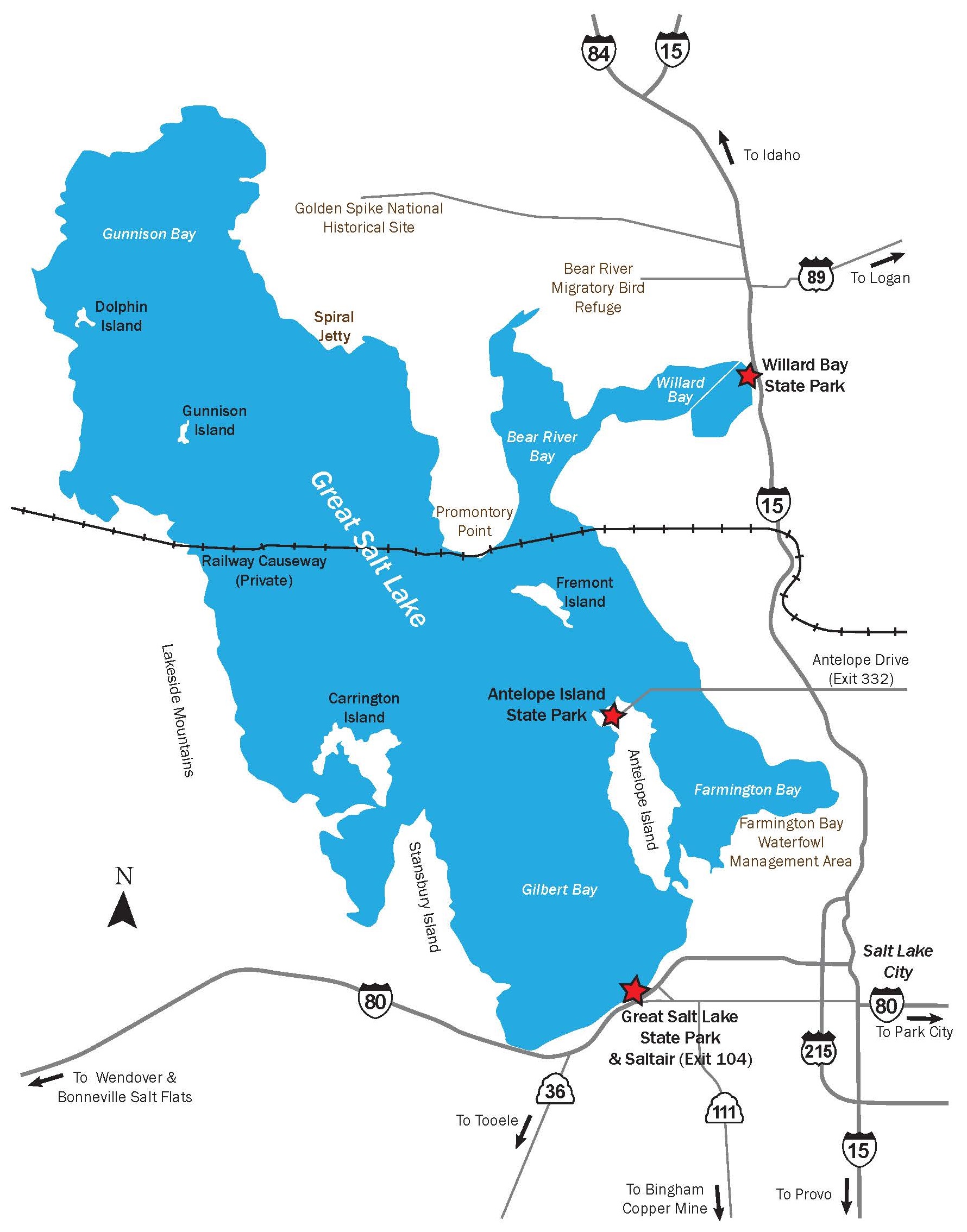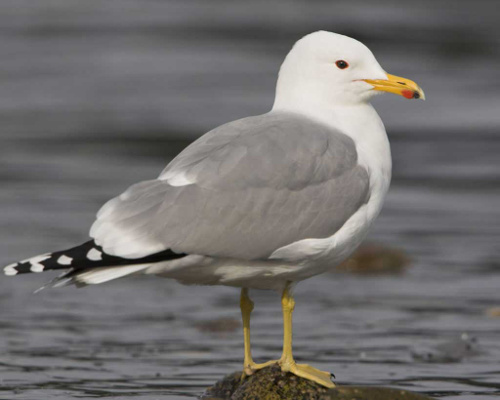Post 1 – Behind the Visitor Center
Push Play button for audio
If you are like most visitors to Great Salt Lake State Park, you are probably wondering why this famous lake is so salty.
Great Salt Lake is part of a huge watershed that begins in the mountains. Snow in the mountains melts and drains into the lake through streams and rivers. The lake sits in a closed basin, which means there is no drainage outlet. Therefore, the minerals that get washed from the mountains into the lake remain there. Water evaporates off the lake and the minerals are left behind. The result is that the water in Great Salt Lake contains 3 to 5 times more salt than seawater!
About 75 miles long and 35 miles wide, Great Salt Lake is the largest natural lake west of the Mississippi River. The lake is large enough to affect the local climate and impacts snowfall as far as the Wasatch Mountains. Although large ice flows form on the lake in the wintertime, the lake has such a high salt content that it never truly freezes. The color also changes from day to day. Sunsets on the lake are spectacular!
The floor of the lake’s basin slopes very gently and the maximum depth is only 33 feet. Because of the shallow depth, changes in water volume dramatically impact shorelines. Since 1849, when the first scientific measurements were taken, the shorelines have varied by fifteen miles. In 1985, the level of the lake was at a historic high and the shorelines extended far enough to flood local farmland, houses and even the highway.
Here at the park, you’re near the southernmost tip of the lake, looking out over Gilbert Bay. There are 8 to 11 official islands in the lake depending on the lake level. Mountain ranges surround the lake on all sides, with the Oquirrhs to the south of us, the Wasatch range to the east, and the Stansbury range to the southwest. Much of the urban development in Utah is east of Great Salt Lake along the Wasatch Mountain Range. Salt Lake City is the largest city in this long vertical strip of urbanization.
As you walk around the park, you will probably notice many California Gulls. Curiously, the California Gull is the state bird of Utah! Utah decided upon the gull as the state bird because gulls rescued the citizens of Utah from starvation in 1848 by eating up hordes of crickets that were destroying their crops.

